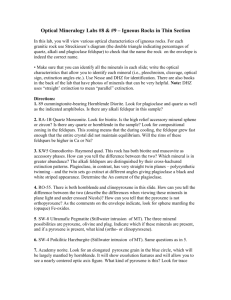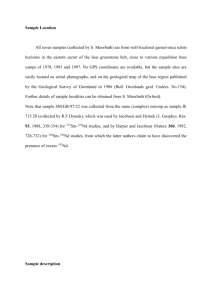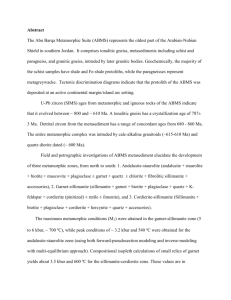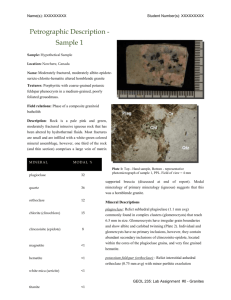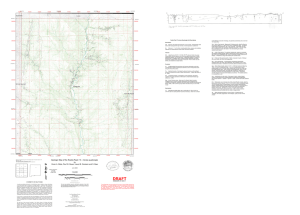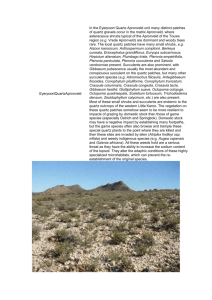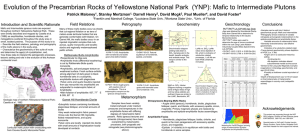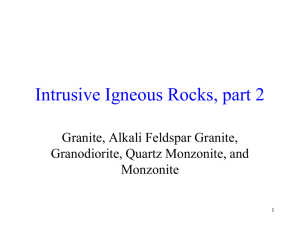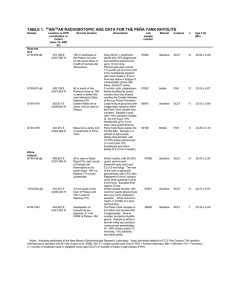Lab 2 Rocks answers
advertisement
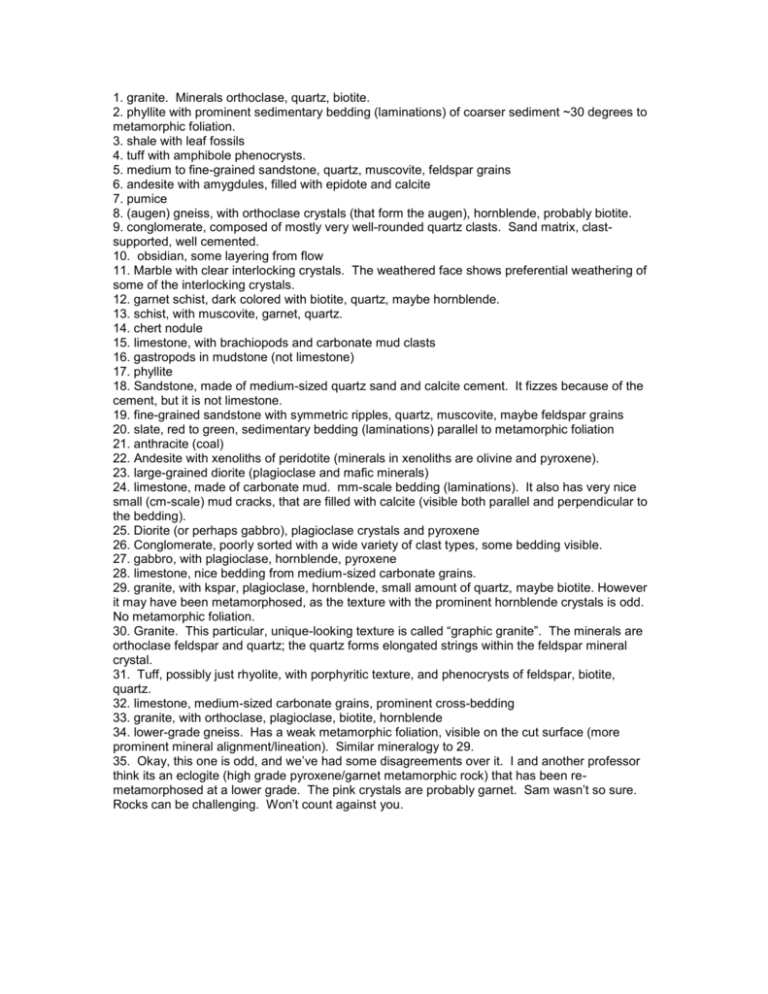
1. granite. Minerals orthoclase, quartz, biotite. 2. phyllite with prominent sedimentary bedding (laminations) of coarser sediment ~30 degrees to metamorphic foliation. 3. shale with leaf fossils 4. tuff with amphibole phenocrysts. 5. medium to fine-grained sandstone, quartz, muscovite, feldspar grains 6. andesite with amygdules, filled with epidote and calcite 7. pumice 8. (augen) gneiss, with orthoclase crystals (that form the augen), hornblende, probably biotite. 9. conglomerate, composed of mostly very well-rounded quartz clasts. Sand matrix, clastsupported, well cemented. 10. obsidian, some layering from flow 11. Marble with clear interlocking crystals. The weathered face shows preferential weathering of some of the interlocking crystals. 12. garnet schist, dark colored with biotite, quartz, maybe hornblende. 13. schist, with muscovite, garnet, quartz. 14. chert nodule 15. limestone, with brachiopods and carbonate mud clasts 16. gastropods in mudstone (not limestone) 17. phyllite 18. Sandstone, made of medium-sized quartz sand and calcite cement. It fizzes because of the cement, but it is not limestone. 19. fine-grained sandstone with symmetric ripples, quartz, muscovite, maybe feldspar grains 20. slate, red to green, sedimentary bedding (laminations) parallel to metamorphic foliation 21. anthracite (coal) 22. Andesite with xenoliths of peridotite (minerals in xenoliths are olivine and pyroxene). 23. large-grained diorite (plagioclase and mafic minerals) 24. limestone, made of carbonate mud. mm-scale bedding (laminations). It also has very nice small (cm-scale) mud cracks, that are filled with calcite (visible both parallel and perpendicular to the bedding). 25. Diorite (or perhaps gabbro), plagioclase crystals and pyroxene 26. Conglomerate, poorly sorted with a wide variety of clast types, some bedding visible. 27. gabbro, with plagioclase, hornblende, pyroxene 28. limestone, nice bedding from medium-sized carbonate grains. 29. granite, with kspar, plagioclase, hornblende, small amount of quartz, maybe biotite. However it may have been metamorphosed, as the texture with the prominent hornblende crystals is odd. No metamorphic foliation. 30. Granite. This particular, unique-looking texture is called “graphic granite”. The minerals are orthoclase feldspar and quartz; the quartz forms elongated strings within the feldspar mineral crystal. 31. Tuff, possibly just rhyolite, with porphyritic texture, and phenocrysts of feldspar, biotite, quartz. 32. limestone, medium-sized carbonate grains, prominent cross-bedding 33. granite, with orthoclase, plagioclase, biotite, hornblende 34. lower-grade gneiss. Has a weak metamorphic foliation, visible on the cut surface (more prominent mineral alignment/lineation). Similar mineralogy to 29. 35. Okay, this one is odd, and we’ve had some disagreements over it. I and another professor think its an eclogite (high grade pyroxene/garnet metamorphic rock) that has been remetamorphosed at a lower grade. The pink crystals are probably garnet. Sam wasn’t so sure. Rocks can be challenging. Won’t count against you.
